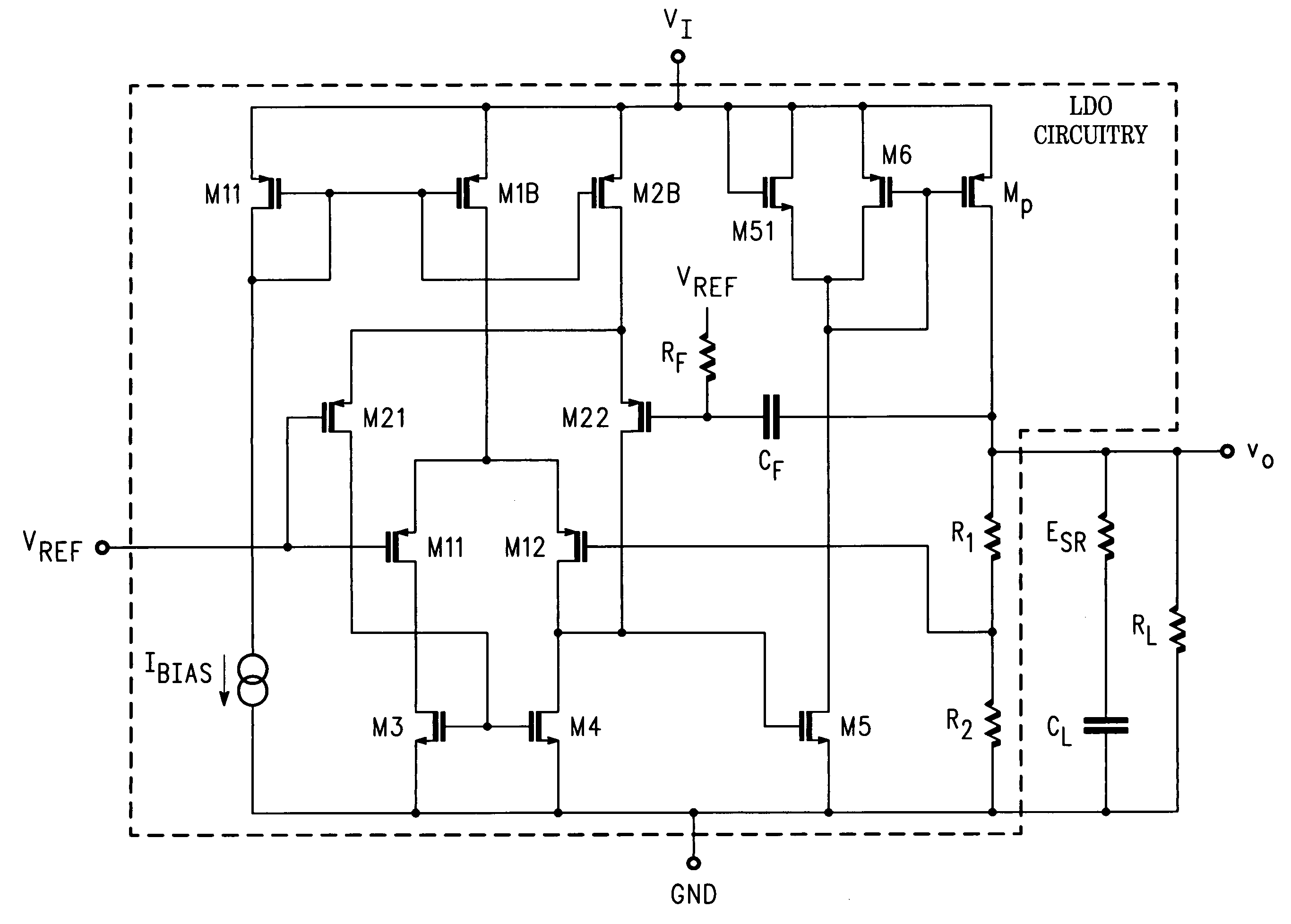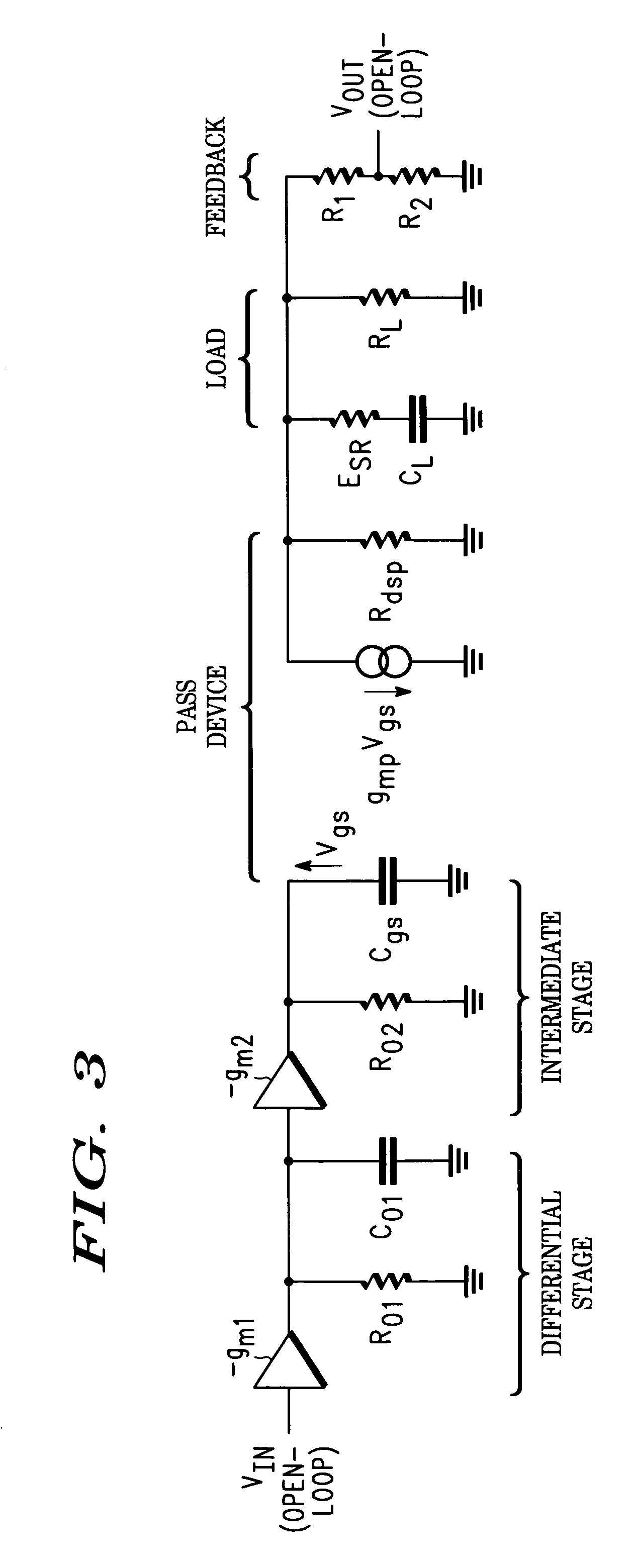Low drop-out voltage regulator
a voltage regulator and low dropout technology, applied in the direction of electric variable regulation, process and machine control, instruments, etc., can solve the problems of large area on the pcb on which the regulator circuit is built, significant reduction of the bypass capacitor below, and higher cos
- Summary
- Abstract
- Description
- Claims
- Application Information
AI Technical Summary
Benefits of technology
Problems solved by technology
Method used
Image
Examples
Embodiment Construction
)
[0018]A classic, known low drop-out regulator is depicted in FIG. 1. It is partitioned into 3 main parts: Pass-device (MOS transistor Mp—having transconductance GM(P) and resistance Rdsp), error amplifier (A(p)) and resistor feedback (R1, R2). The pass-device Mp is used as a current-source, which is driven by the error amplifier (A(p)) to pass a current II from an input voltage VI. The output voltage VO is divided by the resistor ladder R1, R2 and compared with reference voltage VREF. The current in the pass-device Mp is controlled according to this difference. Bypass capacitor CL (having electrical series resistance ESR) is connected to the the output, and output resistance of the load is represented by RL−. The output voltage is given by:
[0019]VO=VREF(1+R1R2)(1)
[0020]To obtain a low drop-out voltage, a PMOS pass device is the most convenient transistor for power management applications.
[0021]Most low-dropout regulators designs use the regulation architecture combined with pole-t...
PUM
 Login to View More
Login to View More Abstract
Description
Claims
Application Information
 Login to View More
Login to View More - R&D
- Intellectual Property
- Life Sciences
- Materials
- Tech Scout
- Unparalleled Data Quality
- Higher Quality Content
- 60% Fewer Hallucinations
Browse by: Latest US Patents, China's latest patents, Technical Efficacy Thesaurus, Application Domain, Technology Topic, Popular Technical Reports.
© 2025 PatSnap. All rights reserved.Legal|Privacy policy|Modern Slavery Act Transparency Statement|Sitemap|About US| Contact US: help@patsnap.com



